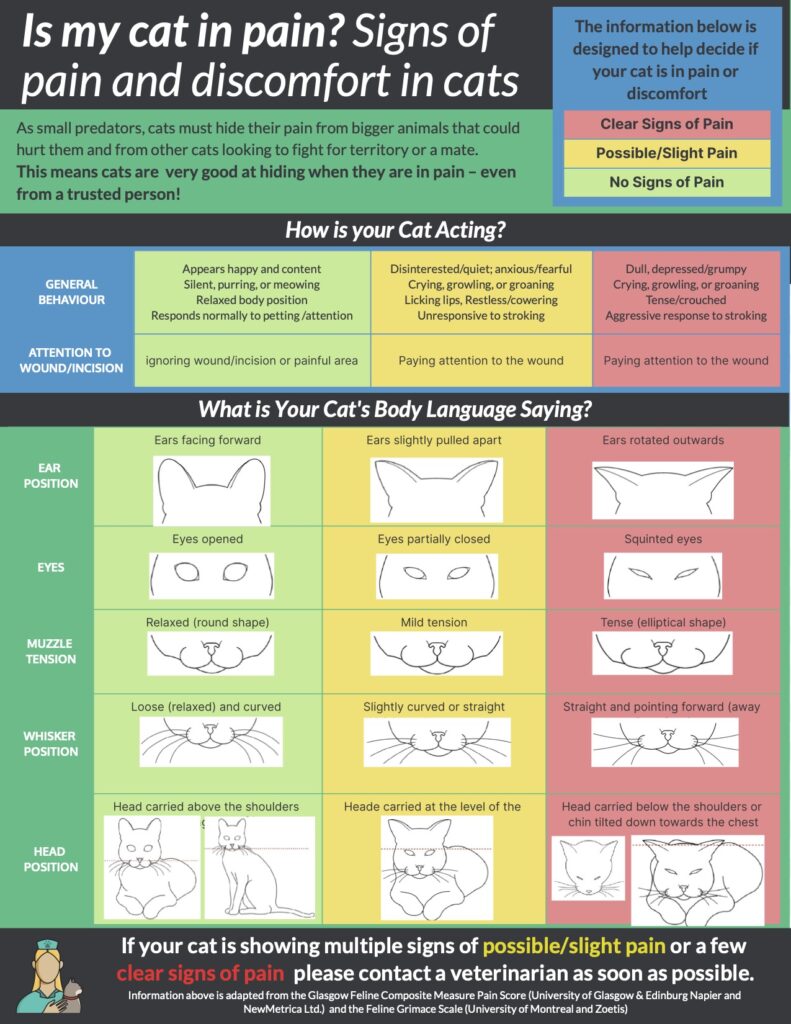
As small predators, cats must hide their pain from bigger animals that could hurt them and from other cats looking to fight for territory, or for a mate. This means that cats are very good at hiding when they are in pain- even from a trusted person!
However, with careful observation, you can determine if your cat is exhibiting no signs of pain, possible signs of slight pain, or clear signs of pain.
Behavior
First, pay attention to how your cat is acting. If your cat appears happy and content, is silent, purring or meowing, with a relaxed body position and it responds normally to petting and attention, chances are that it is fine. If the cat has a wound/incision/painful area that you are already aware of, and the cat seems to be ignoring it, that likely means it is not in pain.
If your cat seems disinterested or is behaving in a way that is quieter than usual, it could be feeling anxious or fearful. If it is crying, growling, or groaning, or licking its lips, cowering, behaving in a restless way, or is unresponsive to being stroked, your cat could be in pain, or in a slight amount of pain. If the cat has a wound/incision/painful area that you are already aware of, and the cat seems to be paying attention to the wound, the cat is likely experiencing some slight pain.
If your cat is behaving dull, and seems depressed or grumpy, and is crying or growling or groaning, and looks tense and is crouched down, and acts aggressively when it is stroked, these are clear signs that your cat is in pain. If the cat has a wound/incision/painful area and also exhibits the behaviours listed above, then the cat is clearly in pain.
Body Language
A cat that is not in pain will have ears that face forward, eyes that are open, a muzzle that is in a relaxed round shape, whiskers that are loose and curved downwards, and a head that is positioned above the shoulders.
A cat that is in slight pain will have ears slightly pulled apart, eyes partially closed, mild tension in the mouth (a slightly squished round shape) with whiskers slightly curved or straight and the head positioned at the level of the shoulders.
A cat that is clearly in pain will have ears that are rotated outwards, squinted eyes, tense (horizontally stretched elliptically shaped) muzzle, and whiskers that are straight and pointing forward. The head is positioned below the shoulders, and the chin would be tilted down towards the chest.
If your cat is showing multiple signs of possible/slight pain or a few clear signs of pain, please contact a veterinarian as soon as possible.
This information is adapted from the Glasgow Feline Composite Measure Pain Score (University of Glasgow and Edinburh Napier and NewMetrica LTD) and the feline Grimice Scale (University of Montreal and Zoetis)
Additional Resources:
Pain in Cats Infographic PDF
